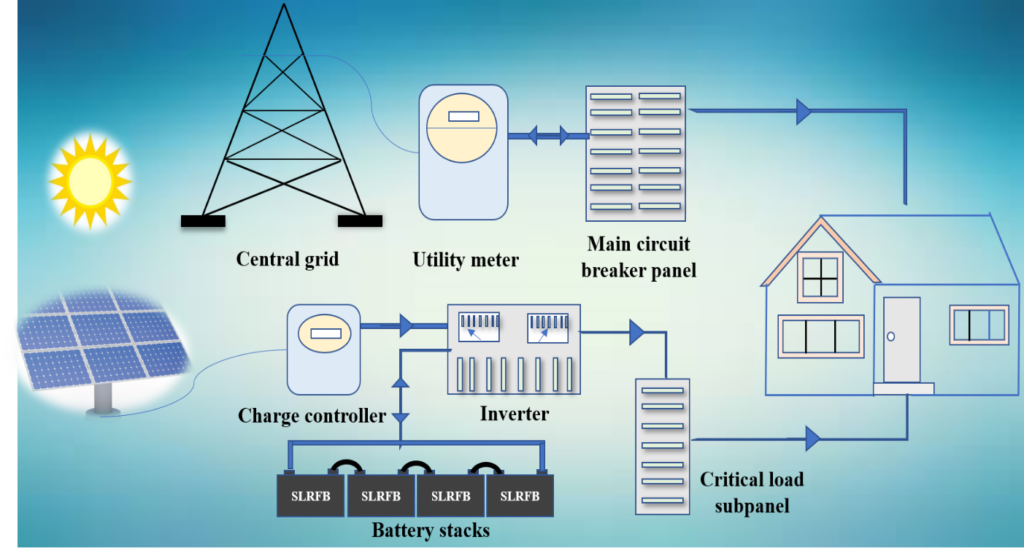An electric battery has become ubiquitous necessity in modern life with its presence in everything from toys to cell phones to electric bikes and cars. It is an electric power source which stores the energy in the electrochemical systems. The device contains two electrodes, a negative terminal (anode) acts as carrier of electrons which pass through the external circuit to the positive terminal (cathode). These two electrodes are separated by an ionically conducting electrolyte medium.
Two types of batteries are available, one is primary, and other is secondary. Primary batteries are discharge only systems and once used, they will be discarded because the electrode materials are irreversibly changed during the discharge process. However, secondary battery can be used multiple times by recharging it with applied electric current. One of the examples of the latter battery types is the lithium (Li)- ion battery used for mobile phones, laptops and other portable devices.
What is a Zinc-air battery?
Zinc-air battery is one of the promising next generation batteries for low-cost energy storage. The device comprising a zinc anode (negative electrode), an air (oxygen) cathode (positive electrode) separated by a porous separator in a sandwich configuration, assembled with alkaline aqueous electrolyte. As the cathode is oxygen supplied abundantly from the atmosphere, the battery exhibits a high energy density. During the discharge process, oxygen permeates the porous cathode, undergoes reduction on the surface, while zinc anode undergoes oxidation to form zincate ions and finally changed to ZnO. During recharging the process is reversed, oxygen and zinc metal are regenerated. Usually, oxygen evolution reaction (OER) or oxygen reduction reaction (ORR) occur in air cathode during discharging or charging processes, respectively.
Scheme 1: Schematic representing the Zinc-air battery configuration.Advantages of zinc-air battery over Li-ion battery
Today lithium-ion (Li-ion) battery technology has put a benchmark in the entire EVs market. Most of the electric vehicles are run by lithium-ion batteries due to their high specific energies, but still lagging of some longer rechargeable time issues, scarcity of material resources in India. Li-ion battery technology requires a high manufacturing cost, and uses non-aqueous electrolyte as ion mediator. There is a chance of thermal runaway or explosion in Li-ion batteries if they are not operated properly or if they undergo any types of abuses, including electrical, thermal and mechanical. Thus, a safety concern arises in such battery technology, though all the EV industries completely depend on Li-ion battery. Considering these above challenges with Li- ion technology, it is essential to focus on the other material that can replace lithium and offer a more reliable, robust battery technology to resolve these problems. Now metal-air batteries have become more promising technology which meets the above requirements. Among the metal-air batteries, zinc-air battery attracted significant attention as an alternative power source for future EVs.
Zinc-air battery is being treated as a front runner in the energy storage field owing to their excellent properties like earth-abundant, cost-effective, environment friendly, safety, and high energy density, compared to Li-ion battery. It is less flammable as they use aqueous electrolyte. Primary zinc-air battery is an old technology that has already emerged as a versatile energy storage device for railway signal, hearing aids, and navigation lights. It has a relatively high practically achievable specific energy of 500 Whkg−1 (comparatively higher than Li-ion battery: 100-265 Whkg–1), implying a large-scale application for future EVs.
Challenges with zinc-air battery
Although zinc-air battery is the best alternative to Li-ion, achieving a good cycle life and energy efficiency are still challenging tasks. It is attributed to the formation of dendrite growth on the surface of zinc electrode, ZnO passivation, and hydrogen evolution reaction. Sometimes shape and morphology of zinc electrode are changed. Both oxygen evolution reaction (OER) and oxygen reduction reaction (ORR) processes suffer from slow kinetics (multi-electron reaction) during charge-discharge cycle at air cathode, including capacity loss due to repeated charge-discharge process. Therefore, a mechanically rechargeable zinc-battery can be explored to reduce issues related to cycle life and energy efficiency and fulfil the requirements of a robust and sustainable battery technologies for future EVs. This technology is essentially a primary battery, where the spent zinc anode is regenerated using solar power or other sources in an electrowinning process.
A mechanically rechargeable zinc-air battery is very advantageous where the anode (spent zinc electrode) is replaced by a fresh zinc electrode at the end of discharge process. So, the problem with irreversibility of zinc electrode and unstable bifunctional air electrode are circumvented.
On the other hand, an electrically rechargeable means the battery is recharged i.e., converting electrical to chemical energy occurring within the cell by bifunctional air electrode. The main drawback in electrically rechargeable battery is, that the operation is executed within the battery itself. The air electrode undergoes corrosion during the charging process and there is a deterioration of cathode materials catalyst, carbon additive and binder at cathode.
Our battery teamwork
Considering the above circumstances facing with electrically rechargeable zinc-air, our battery team from Solar Energy Research Group is designing mechanically rechargeable zinc-air batteries which will be operated in discharge mode and can be recharged within 10-15 minutes. The main focus is to prevent the battery from ZnO passivation and avoid hydrogen evolution reaction (corrosion of zinc) which occur during the cycle. They have developed a zinc-air battery packs of 12 V and 15 Ah and achieved 95% zinc utilization with specific energy of more than 500 Wh/kg. Our team is trying to build a recharging station to generate Zn from spent ZnO using solar energy and working on improving the energy density and lifetime of batteries. The team along with industry partners is working on building multi numbers of battery packs, coupled with electrowinning recharging stations to power a 5 kW motor drive that simulates electric vehicles.
Author: Aparajita Das, National Postdoctoral Fellow, Aravind Kumar Chandiran, Assistant Professor, Department of Chemical Engineering, IIT Madras.



